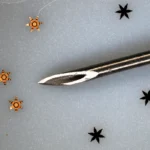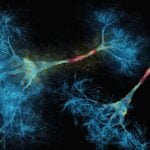Advancing Biological Imaging and Sensing Using Quantum Technologies
Advancing Biological Imaging and Sensing Using Quantum Technologies with Warwick Bowen.
Quantum technologies can exponentially accelerate computer simulations and detect signals that would be invisible to other technologies. This provides the potential for wide impact across the biosciences: better modelling of biochemical processes, and better imaging of biological systems. In this talk I will provide an overview of this potential, and how it could create a new field of quantum biotechnology. As an illustrative example, I will then introduce work in my laboratory that uses quantum correlated light to enhance bioimaging. In that work, we demonstrate for the first time that quantum correlations can be used to evade photochemical intrusion on the biological specimen, and therefore to observe biological structures that would be otherwise inaccessible. We achieve this in a coherent Raman microscope, providing chemically-specific information about the cell. Our results represents the first demonstration of absolute quantum advantage in biological microscopy, and we hope will open the door to a bright future for quantum bioimaging.
Latest Posts
-
 Johns Hopkins Postdoc Named in Forbes `30 Under 30′ List
December 8, 2025
Johns Hopkins Postdoc Named in Forbes `30 Under 30′ List
December 8, 2025
-
 Micro Grippers: David Gracias Builds Micromachines That Fold, Stick, Swim, and Sense—All Inside the Human Body.
November 20, 2025
Micro Grippers: David Gracias Builds Micromachines That Fold, Stick, Swim, and Sense—All Inside the Human Body.
November 20, 2025
-
 A bold new approach to autoimmune diseases
November 19, 2025
A bold new approach to autoimmune diseases
November 19, 2025


